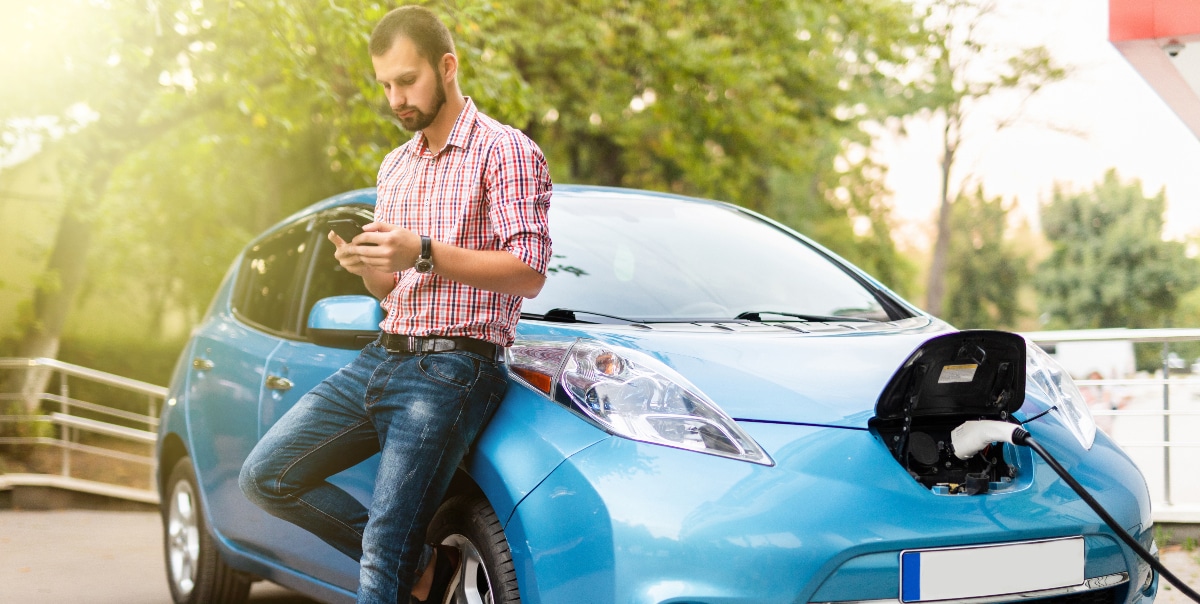How Long Does It Take to Charge a Car Battery With a Portable Charger?

3 Min. Read
The battery is a component you’ll find in both EVs and gas-powered cars. However, the function of the battery in these two applications is very different. While an EV battery acts as the primary source of power, the battery of a gas-powered vehicle provides the initial electricity burst needed to crank the engine.
With battery and charger technology innovations, more high-performing portable EV chargers are becoming available. Let’s look at portable car charging and whether it can charge a car battery safely and effectively.
Why the charger output matters
Portable EV chargers have an output measured in amperes, often called amps. It’s a unit used to express the rate at which electric current flows.
A higher rate of current flow means the charger can transfer more energy to a battery per hour, which results in a faster charging time. The amperage is crucial when you’re considering a portable car charging solution.
For traditional gas-powered vehicles, the purpose of a portable charger is to provide a quick burst of electricity that will jump-start a dead battery. You’ll typically find chargers with a rating of 1,000 amps or more to jump-start the vehicle. Once the engine is on, the alternator will continue charging the battery and the portable charger is no longer needed.
On the other hand, the portable chargers designed for EVs or PHEVs have a much lower amperage rating since their purpose is to provide a continuous charge to extend the range of the battery that powers these vehicles. The amperage can vary from one product to another.
A charger with a rating of 4 amps would extend the range of an EV by 3-6 miles per hour, which is comparable to Level 1 charging. The range extends by 25-30 miles per hour of charging with a 40-amp charger. It’s similar to Level 2 charging even though the charging rate can vary significantly from one vehicle to another.
Why the time required for portable car charging varies
It’s difficult to use exact values when discussing how long it takes to charge a battery because several factors affect charging times. The battery’s age and condition can determine how well it can hold a charge and how quickly it will charge.
In gas-powered vehicles, you’ll typically find a lead-acid battery. These batteries use a chemical reaction to produce ions. However, after three to four years, the age of the components prevents the reaction from happening in optimal conditions, and you’ll have to replace the battery.
The battery’s connections can become loose or corroded and prevent it from charging and discharging correctly. The alternator can also become damaged and fail to charge the battery when you drive.
EVs use a different type of battery known as lithium-ion batteries. These batteries use two main components, a cathode and an anode. As energy flows into the battery, lithium ions move from the cathode to the anode, and the direction is reversed when you discharge the battery.
However, over time, some lithium ions become permanently embedded in the anode, which means fewer ions are available to create a potential difference in the battery. It’s a slow process that causes EV batteries to lose around 10% of their capacity after the first five years.
You should also know that using the wrong charger can damage your vehicle’s battery and affect its ability to hold a charge. While EVs have built-in features to regulate charging, a low-quality portable charger might cause a surge that damages the battery.
Avoid dead batteries and reduce maintenance with an EV
With an average lifespan of four years, car batteries are a component that requires frequent maintenance and replacements. Not having to deal with dead batteries and jump-starts is one of the many advantages of EV ownership.
If an EV battery is low or depleted, all you have to do is plug your vehicle in, and the battery will start charging. You can plug in your EV to a regular outlet for Level 1 charging or opt for faster charging with Level 2 charging stations, which are available in public locations or even at home with a few minor modifications.
There are other advantages when it comes to maintenance. EVs have fewer fluids and fewer moving parts. You won’t have to spend money on oil changes and can typically save $4,600 on maintenance and repairs over the lifespan of an EV compared to a gas-powered car.
And with no tailpipe emissions, EVs are a much better option for the environment and human health. Not only will you save the cost of a yearly smog inspection, but you’ll also see significant savings at the pump. On average, EV drivers save $1,000 a year on gas, but this number varies depending on how much you drive.
